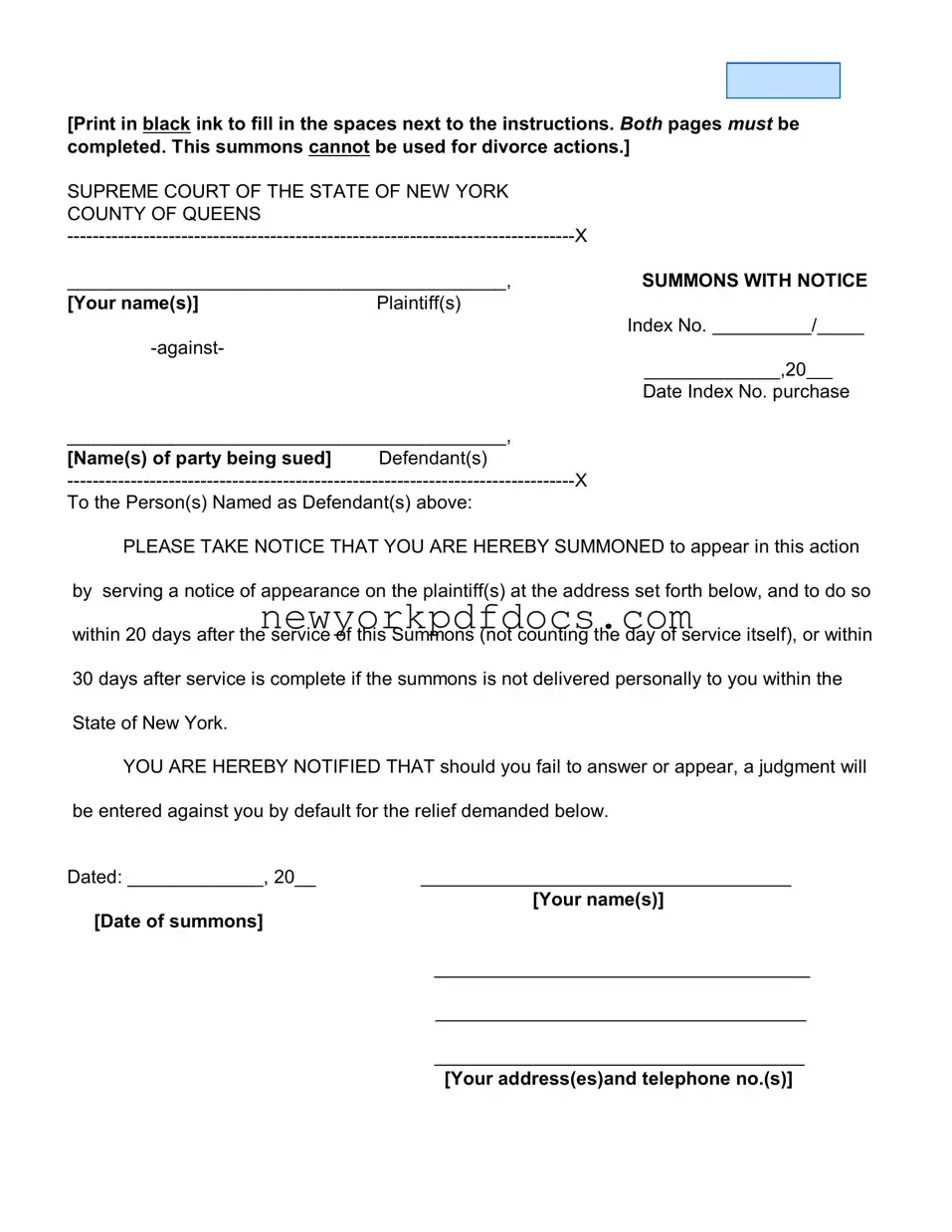
[Print in black ink to fill in the spaces next to the instructions. Both pages must be completed. This summons cannot be used for divorce actions.]
SUPREME COURT OF THE STATE OF NEW YORK
COUNTY OF QUEENS
-------------------------------------------------------------------------------- |
X |
|
|
|
|
__________________________________________, |
SUMMONS WITH NOTICE |
[Your name(s)] |
Plaintiff(s) |
Index No. |
/ |
|
|
-against- |
|
|
|
|
|
|
|
|
|
_____________,20
Date Index No. purchase
__________________________________________,
[Name(s) of party being sued] Defendant(s)
--------------------------------------------------------------------------------X
To the Person(s) Named as Defendant(s) above:
PLEASE TAKE NOTICE THAT YOU ARE HEREBY SUMMONED to appear in this action
by serving a notice of appearance on the plaintiff(s) at the address set forth below, and to do so within 20 days after the service of this Summons (not counting the day of service itself), or within 30 days after service is complete if the summons is not delivered personally to you within the State of New York.
YOU ARE HEREBY NOTIFIED THAT should you fail to answer or appear, a judgment will be entered against you by default for the relief demanded below.
Dated: _____________, 20__
[Your name(s)]
[Date of summons]
[Your address(es)and telephone no.(s)]
Defendant(s) ____________________________________________________________
[Address(es) of party being sued]
Notice: The nature of this action is [briefly describe the nature of your case against the defendant(s), such as, breach of contract, negligence]:
The relief sought is [briefly describe the kind of relief you are asking for, such as, money damages of $25,000]
Should defendant(s) fail to appear herein, judgment will be entered by default for the sum of [amount of money demanded], with interest form the date of [date from which interest on the amount demanded is
claimed] and the costs of this action.
Venue:
Plaintiff(s) designate Queens County as the place of trial. The basis of this designation is [check box that applies]:
Plaintiff(s) residence in Queens County
Defendant(s) residence in Queens County
Other [See CPLR Article 5]:


